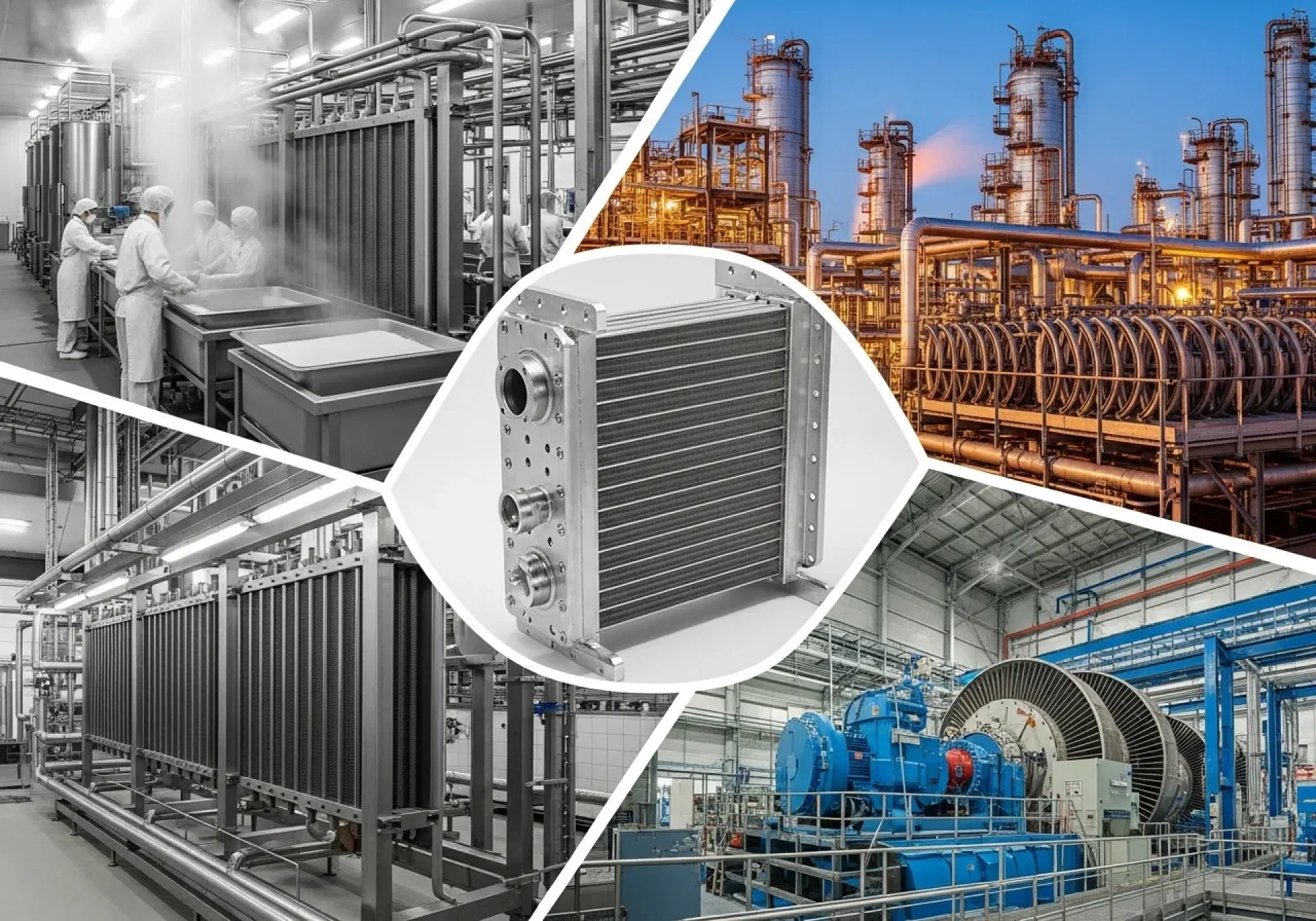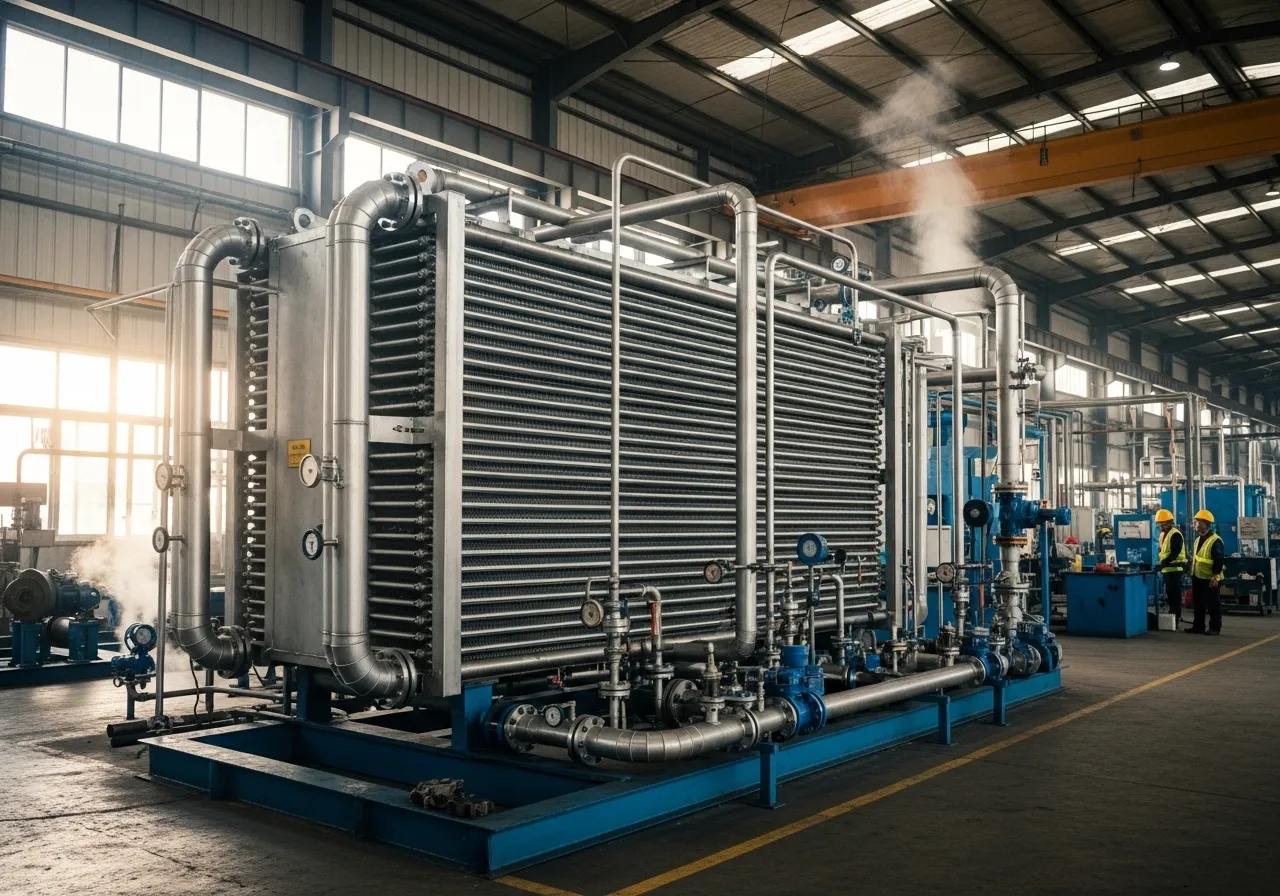Heat Exchangers in Industry: Principles, Types, and Process-Specific Selection Criteria

In almost every factorybe it chemical, petrochemical, food and beverage, energy, or HVAC systemsthe heat exchanger is the heart that controls efficiency, energy, and process safety by transferring heat between two fluids. A solid understanding of its fundamentals, types, and selection criteria can significantly reduce energy costs, prevent unexpected shutdowns, and extend the system's life.
Heat Transfer Principles: Factors Defining Performance
The core function of an industrial heat exchanger is to transfer energy from a hot fluid to a cold fluid through a dividing wall. Three main variables determine its performance: the heat transfer area, the overall heat transfer coefficient (U), and the temperature driving force (e.g., LMTD or effectiveness ε in the NTU method). Additionally, flow velocity, fouling conditions, pressure drop (ΔP), and the properties of the wall/plate/tube material directly impact the system's efficiency and energy consumption.
Main Types and Their Pros and Cons
To make an appropriate selection, it is essential to understand the advantages and disadvantages of each type:
- Shell & Tube: Robust structure, withstands high pressure/temperature, suitable for dirty services or fluids with particles, but requires large space and lengthy cleaning time.
- Plate Heat Exchanger (Gasketed/Sealed): High transfer area in a compact size, energy-efficient, allows for CIP (Cleaning-In-Place), but not suitable for very high pressures/temperatures and requires gasket maintenance.
- Air-Cooled / Fin-Fan: Does not rely on cooling water, ideal for water-scarce areas, but performance depends on weather conditions and it occupies a large installation area.
- Spiral / Double-Pipe: An option for high-fouling applications or low flow rates; simple structure, but total heat transfer capacity is often lower than plate types.
Applications by Industry Sector
Industrial heat exchangers are adapted to suit different real-world processes. Common examples include:
- Chemical/Petrochemical Industry: Pre-heaters/reactor coolers, condensers, reboilers that handle high pressures and corrosive fluids.
- Food and Beverage: Plate HXs for pasteurization, rapid heating/cooling, with CIP systems for hygiene.
- Energy/Boilers: Heat exchanger networks to increase fuel efficiency, such as economizers and feedwater heaters.
- HVAC/Refrigeration: Chilled-hot water systems, heat recovery from exhaust, and circuit isolation to prevent contamination.
Selection Criteria for Real-World Plants: Think Holistically
Although standard models exist, selecting the right industrial heat exchanger requires a long-term view of both the process and maintenance:
- Fluid Type: Viscosity, corrosiveness, particles/fibers, fouling tendency.
- Operating Conditions: Temperature/pressure, flow rate, acceptable ΔP, required approach temperature.
- Energy Goals: Seeking maximum efficiency or operational flexibility.
- Maintenance: Accessibility for CIP/opening, cost of spare parts (plates/gaskets/tubes), in-house technician skills.
- Installation Space and Future Expansion: Footprint, modularity, load allowance.
Maintenance and Performance Enhancement
Regular care extends the equipment's life, maintains performance, reduces energy costs, and prevents emergency shutdowns.
- Monitor ΔP and inlet-outlet temperatures to detect fouling early.
- Schedule CIP/plate cleaning/tube punching based on actual usage, not just a calendar.
- Use appropriate materials/chemicals to prevent fouling and corrosion for the specific fluids.
- Review pump/valve/flow control selection to achieve the optimal Reynolds number, reducing thick boundary layers.
- Regularly inspect gaskets/seals and stock standard, frequently used spare parts.
Conclusion: The Right Choice from the Start Saves for a Lifetime
With an understanding of the principles, types, and selection criteria, designing and choosing an industrial heat exchanger that suits the fluid and process will impact the long-term energy efficiency, stability, and safety of the entire system.



